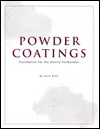The Solution to Al’s Frigid Fiasco

Editor’s note: Following is Keith M. Moody’s answer to the problem presented in “Al’s Frigid Fiasco” in the April 2021 issue of PCI.
Polly Mertz’s new emulsion batch was delayed due to some of the ingredients freezing when left overnight on the dock. Polly, eager to start her batch scale-up, had approved placing the drums in a steam-heated room in the plant to allow for warming and easy pumping. When Al noticed smoke coming from the “hot room,” he was able to set off the fire alarm and the sprinklers after two of the drums started smoking and erupting out through the bung holes. What was the material that caused the problem, and what mistake had Polly made in heating up those frozen drums?
As Al Kidd sprinted away from the smoke and down the steps from the second story of the plant, he ran into the scheduler, Stu Earley, coming up the steps. Al insisted that Stu not go any further due to the smoke filling the stairwell and the fire crew still working to contain the reaction of the two drums. Stu said frantically, “This is all my fault because an hour ago I arranged for several drums to be moved to the hot room.” Now safely outside the plant building, Stu told Al the story of how Polly Mertz had wanted to start a batch but several of the drums were frozen. Al assured Stu, as both men walked to the evacuation point, that it was not his fault. Only the chemist, Polly, can approve heating the drums. Al asked what drums had been placed in the hot room. Stu replied, “One drum of an ethoxylated nonylphenol surfactant and two drums of monomer.”
Both men were familiar with heating surfactants in the cold winter months. When surfactants are stored below their pour point, they cease to flow. Many surfactants are formulated to have a pour-point temperature that is close to room temperature, above which allows for easy pumping. They also knew that most ethoxylated surfactants are stable at elevated temperatures. Heating the drums in the hot room was common practice. The surfactant was not the problem.
Stu told Al that when he asked Polly about the monomer, she assured him that heating should not be a problem. The monomer had added inhibitor to keep the material from polymerizing. She assured Stu that there was little chance of the monomer polymerizing and causing an exothermic reaction in the two drums during the thawing process.
Al was sure that Polly understood how inhibitors work and that they are added to suppress the polymerization of acrylic monomers. MEHQ (mono-methyl ether hydroquinone) was the inhibitor added to this monomer, typically at levels around 200 ppm. Polly had specified even higher amounts of MEHQ in this reactive monomer just to be on the safe side. She knew that higher inhibitor concentrations can be overcome in emulsion polymerization by adding more initiator. Inhibitors stop polymerization by reacting with free radicals. This inhibition of polymerization occurs until the inhibitors are consumed.
Even though Polly had assured Stu that no polymerization would occur, Al already knew from seeing identifying codes on the drums and smelling the vapors coming from the drums that the monomer was acrylic acid. Contrary to Polly’s insistence, the acrylic acid had polymerized, causing a very exothermic reaction producing the smoke and odor.
Acrylic acid is often used in emulsion polymerization to add acid functionality to the polymer, improve colloidal stability, affect the flow properties of the emulsion, improve adhesion, and serve as crosslinking sites in thermoset emulsions. Acrylic acid is also a monomer that freezes at 13 °C.
Al was sure that Polly knew a lot about acrylic acid. She knew that the glass transition temperature of the homopolymer was 106 °C. She knew about how incorporating the monomer into the emulsion affects the glass transition temperature of the latex. She probably even knew how it tends to polymerize in the water phase rather than the monomer phase. Al thought that she probably knew a lot about the safety and high-temperature properties of acrylic acid, like its flashpoint, and its propensity to form dimer. However, he also knew that she didn’t know enough about the storage and handling of this dangerous material and especially about its low-temperature properties.
Now that Al knew many of the details of how the acrylic acid ended up in the hot room, he felt it was time to call Polly. Due to the fire alarms and possible threat of toxic vapor, he caught Polly hunkered down in her office. All employees of Big Time Paint had been told to stay in offices until the fire department had given the all-clear for a hazardous vapor release.
When Polly answered the phone, it was clear to Al that she had no idea what had gone on in the plant. Al started by asking if she had approved the thawing of the material in the hot room. Polly told Al that she had thawed a frozen plastic quart container of acrylic acid in the lab by allowing the material to roll overnight at room temperature. This had not caused any problem. Polly asked Al, “Why? Is there a problem?”
At this point, Al asked if Polly had consulted her safety data sheet (SDS) for acrylic acid. When she said she had not, Al asked her to access the SDS online while he waited on the phone. He said, “Be sure and look closely at Section 7, Handling and Storage.” He could hear Polly mumble something about a 14-page document, then swallow hard on the phone as she got to the last line of Section 7.
“CAUTION: Freezing of acrylic acid should be avoided [its freezing point is 13 °C (55 °F)] because thawing it can be extremely hazardous. Melting of crystallized/frozen acrylic acid requires only mild heat. DO NOT OVERHEAT. Withdrawing liquid from melting mass results in remaining solid of lower stability because of depletion of inhibitor*."
While Polly sat in stunned disbelief, finally starting to realize the mistake she had made, Al continued, ”Polly, when the acrylic acid froze on the dock, the first crystals formed are along the inner wall of the drum. The crystalline structure of the acid changed the solution properties of the MEHQ: acrylic acid monomer. As the acrylic acid froze, it pushed out all impurities including the inhibitor, much as you squeeze water from a wet sponge. Now the MEHQ is no longer evenly distributed throughout the monomer where it can react with free radicals and inhibit polymerization. The frozen monomer is completely uninhibited. Then when you approved putting the material in the hot room, the steam superheated the area between the drum wall and the frozen monomer crystals. The crystallized monomer particles were deficient in any MEHQ inhibitor and dissolved oxygen, both needed to inhibit the monomer. This localized steam heating caused rapid polymerization and a very exothermic reaction. Luckily, I saw the smoke and alerted the fire department before the reaction got out of control. We were all lucky this time because this could have been much worse.”
Al had to remind Polly that when she safely thawed the small container of acrylic acid in the lab, she had used much lower temperature with good mixing to make sure the inhibitor was evenly distributed. She had followed the correct procedure in the lab. Low temperature and mixing were not used in the hot room. “Next time don’t be so quick get your batch made. Any time a process changes, look at the possibility for problems.”
Al couldn’t help in reminding Polly of one of his favorite quotes by Pearl Buck. “Every great mistake has a halfway moment, a split second when it can be recalled and perhaps remedied.” Don’t let those moments pass without thinking through all your decisions.
*For more information on acrylic acid: “Acrylic Acid: A Summary of Safety and Handling” 4th Edition, 2013, Compiled by Basic Acrylic Acid Monomer Manufacturers Inc.: BASF Corporation, Arkema Inc., and The Dow Chemical Company.
Looking for a reprint of this article?
From high-res PDFs to custom plaques, order your copy today!





